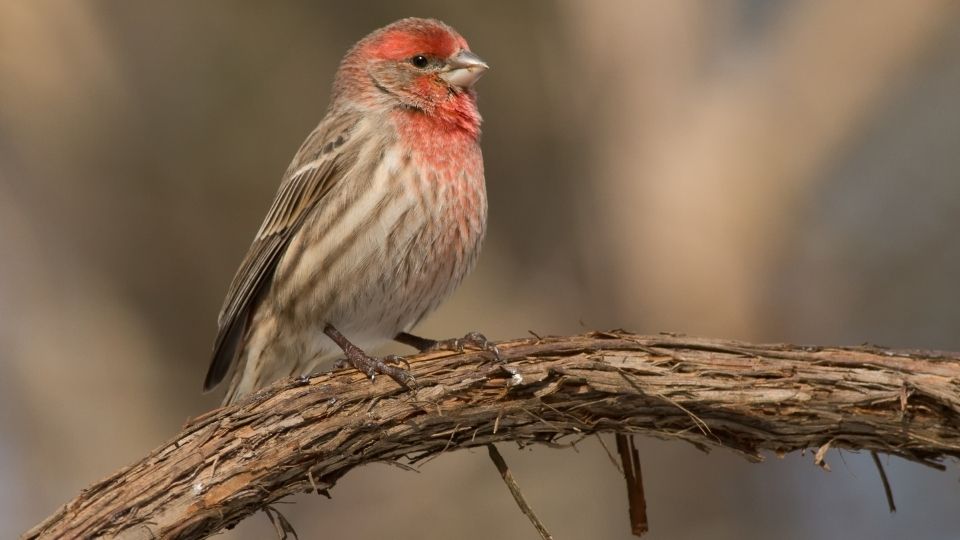What is the difference between a sparrow and a finch?
One of the biggest challenges for birders is distinguishing the many brown songbird species, including the Finch vs. Sparrow breeds. Finches have less pattern feathering and shorter and dark legs. Sparrows have more patterned detailing in their feathers and longer pale pinkish legs.
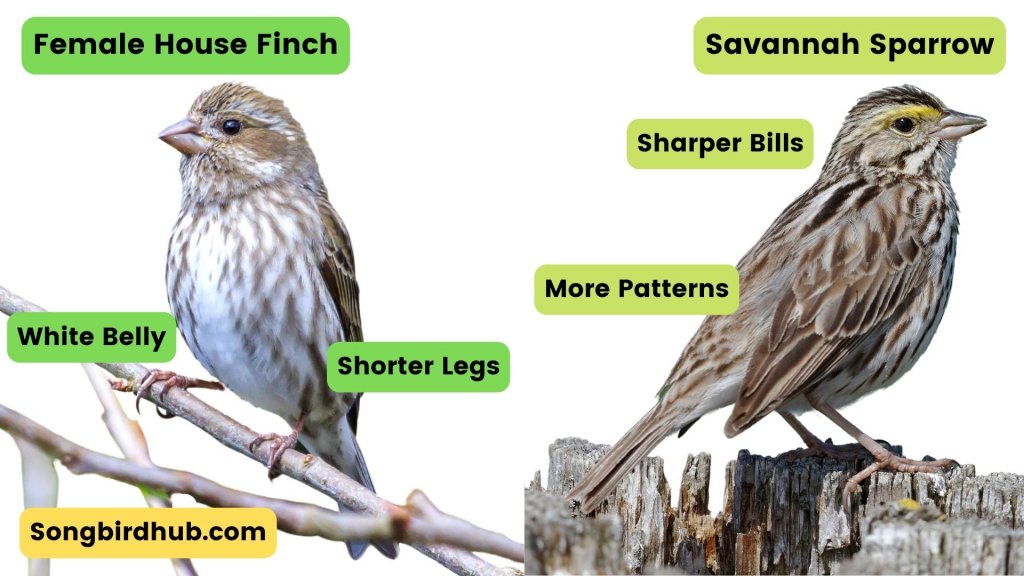
Like many small brown birds, finches and sparrows are often confused for each other, and with good reason.
Since house Sparrows and Finches share many of the same ranges in North America, you’ll have to depend on the slight differences between them to make your identification.
Some of the more easily distinguishable features are their beaks and tails.
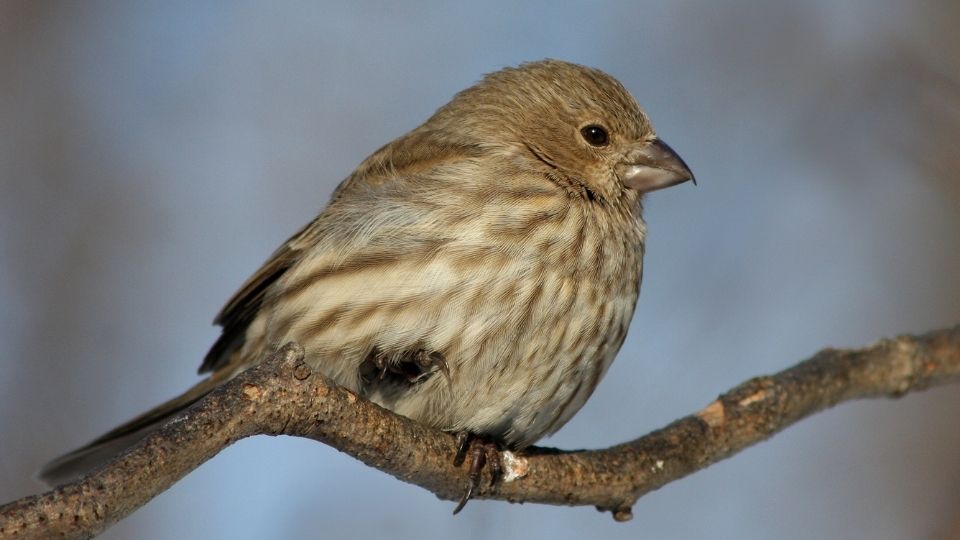
House Finches have smaller bills that are conical in shape. They have shorter, narrower tails, and do not flash their tails as frequently.
House Finches also have a slightly longer wingspan than Sparrows.
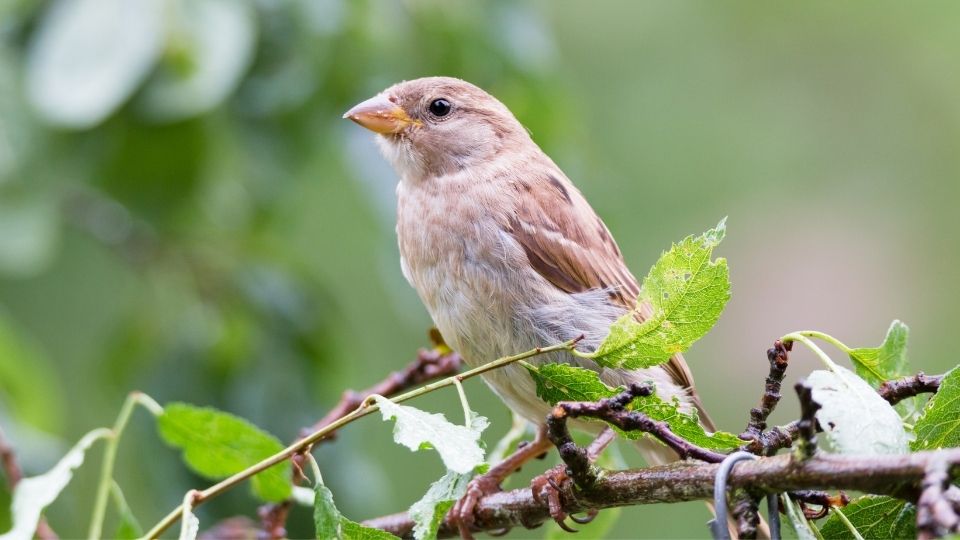
Sparrow beaks are sharper and straighter.
Sparrows generally have a longer tails, and are also more apt to actively flash, wag, or wave their tails.
But what if the birds aren’t side by side? And how can you tell which bird you’re looking at if there’s nothing to compare it to?
First, let’s start by covering the individual characteristics of each bird species.
How do I identify a Finch?
Male House Finches share the same brown base color as many other birds, but the vibrant shading sets them apart.
Typically a bright shade of red, the coloring sometimes has a pink or purple cast.
The color is spread across the head, chest, and shoulders. Concentrated on the outermost feathers, the shading has an almost airbrushed look unique to finches.
How much of the body has this red color depends on the species. Red finches and house finches have most of their coloring around their heads, while the purple finch is shaded all over.
Female house finches are a little harder to identify, but a few key distinguishing features will help you pick out a female finch easily.
While female house finches share a similar brown feathering to sparrows, their belly feathers are completely different.
Brown streaks cover the entire chest and belly over a cream or white base. These streaks can be small or appear as long dashes covering the entire underside of the female House Finch.
The brown markings on the underside of the male are typically long lines. These lines can extend from chin to vent, but any red feathering will cover them.
Both male and female finches have short, dark legs perfect for perching. Their legs and beaks are the same shade of dark gray.
How can I identify a sparrow?
Sparrows are primarily brown, with a brown or beige belly.
Adult male sparrows have darker brown feathers on their heads and shoulders. They have a black bib that covers their eyes and chest.
On some male sparrows, the belly feathers are more gray than beige. These feathers are plain with no markings.
Female sparrows have brown feathers throughout, with dark brown feathers on their wings. They have no markings on their chest and abdomen, which is a duller brown or beige color.
Both male and female sparrows have a small, conical bill that is black or yellow. The color of the beak depends on the bird’s gender and breeding stage. Young sparrows have lighter bills.
Sparrows have long legs that are brownish-orange in color. While they perch, they spend quite a bit on the ground foraging for food.
Finch vs. Sparrow: Ways you can differentiate them
Now that you know how to identify finches and sparrows individually, a side-by-side comparison of their differences is far easier.
Here are the key differences between finches and sparrows.
Length of legs
Finches have shorter, darker legs. These legs are perfect for perching.
Sparrows are ground birds with longer, pale orange legs. They can perch but prefer narrow perches at least 5/8″ long.
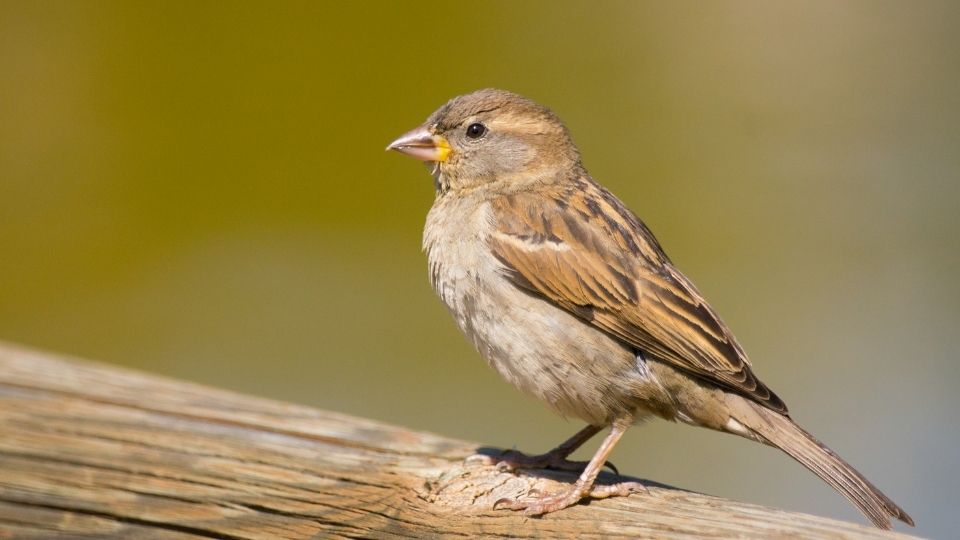
The appearance of feathers and patterns
Male finches have highlighted color on their head and chest feathers that gives the appearance of airbrushed red over the brown feathers.
Female finches have telltale brown flecks on cream or white bellies.
Sparrows are darker than finches. Sparrow feathers are primarily brown with no patterning on the underside. Female sparrows have no distinctive markings.
Male sparrows are mostly brown with a dark patch on their chest. Both males and females have a plain brown, gray or beige belly with no additional markings.
Length of the tail feathers
Sparrows have longer, wider tails and often flash, wag, or wave their tail feathers.
Finches have much shorter tails that are narrow. While finches are prone to wing flapping for attention, they rarely flash or wave their tails.
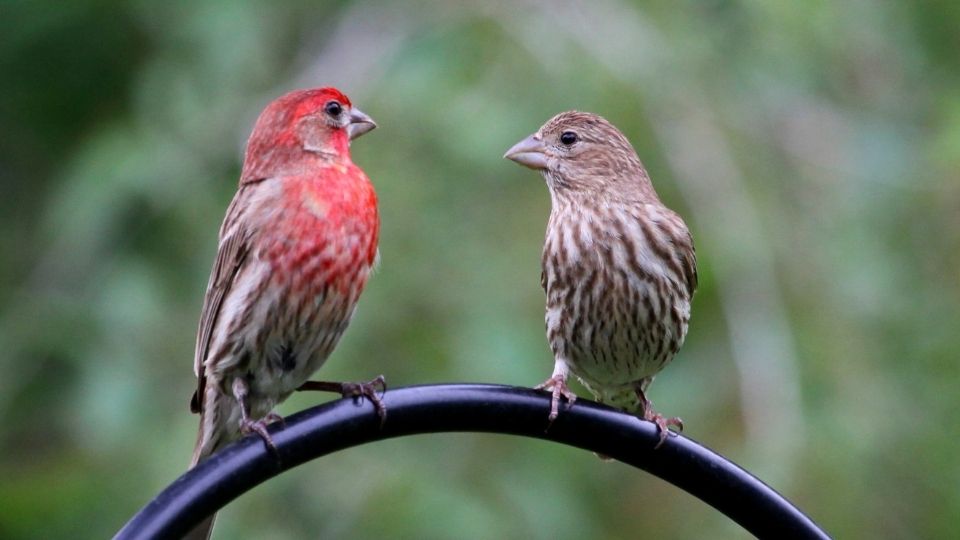
The shape of the bird’s bill
Finches have large, thick beaks that are greyish in color like their legs. They remain the same color year-round.
Sparrows have a conical bill that is smaller than the finch’s beak. Their bills are black or yellow depending on gender and breeding season.
Behavior
Another notable difference between sparrows and finches is their natural behavior.
Since sparrows were introduced to North America, they have evolved to enjoy close proximity to humans. They can be found anywhere with heavy foot traffic, including outdoor restaurants and urban areas.
They are ground foragers and spend almost as much time hopping about in search of scraps as they do flying.
Finches prefer higher perches and socializing away from humans. While they will forage on the ground if birdseed has spilled, finches prefer bird feeders placed higher in the air.
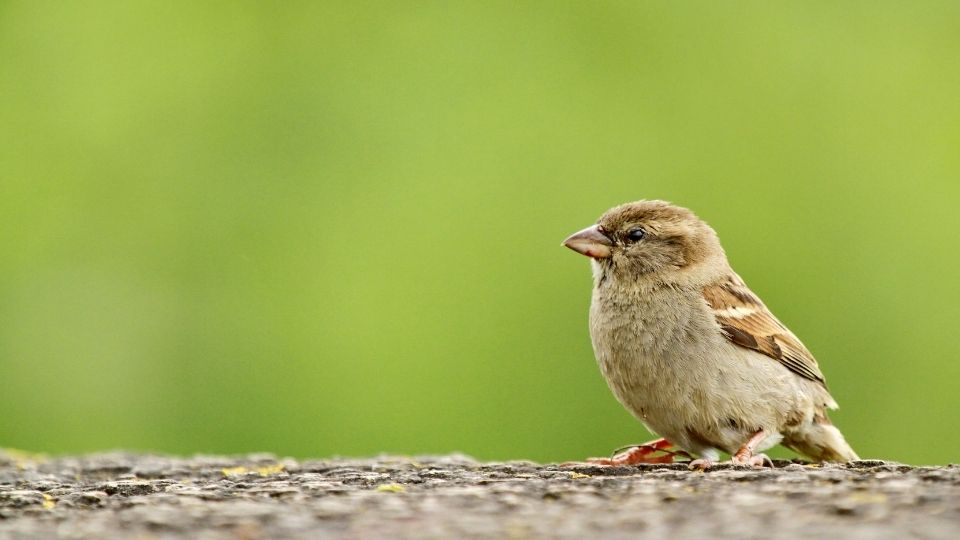
Finches and sparrows are often confused for each other based on similar coloring and size. Male finches are slightly easier to identify due to their distinctive red shading over brown feathers.
Since both female finches and sparrows are primarily brown, they are a bit more difficult to tell apart.
Once you’ve examined their feathers, coloring, bill shape, and leg sizes, it’s easy to see that these two small birds are quite unique.
Their behavior offers additional clues to help narrow down whether you are looking at a finch or a sparrow.
Telling the different species apart is a breeze with these key identifying features and a little practice.

